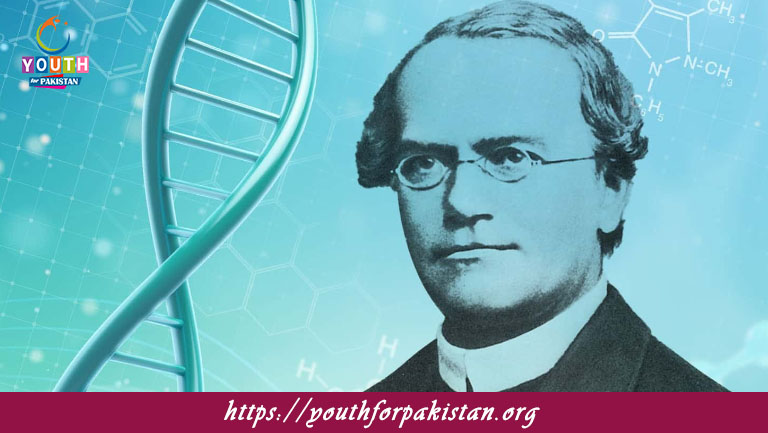Mendel’s Experiment MDCAT MCQs with Answers

Welcome to the Mendel‟S Experiment MDCAT MCQs with Answers. In this post, we have shared Mendel‟S Experiment Multiple Choice Questions and Answers for PMC MDCAT 2024. Each question in MDCAT Biology offers a chance to enhance your knowledge regarding Mendel‟S Experiment MCQs in this MDCAT Online Test.
Mendel’s primary experimental organisms were:
a) Fruit flies
b) Mice
c) Pea plants
d) Corn
Which of the following traits did Mendel study in pea plants?
a) Leaf shape
b) Flower color
c) Root length
d) Fruit size
Mendel’s first experiments involved crossing:
a) Two homozygous dominant plants
b) Two homozygous recessive plants
c) Two heterozygous plants
d) Two plants with contrasting traits
In Mendel’s experiments, what was the phenotype ratio of the F1 generation when crossing two pure-breeding plants with contrasting traits?
a) 1:2:1
b) 3:1
c) 9:3:3:1
d) 1:1
Mendel’s pea plant experiments included the study of:
a) Single traits
b) Multiple traits
c) Environmental factors
d) Genetic mutations
In Mendel’s monohybrid cross, what was the expected phenotypic ratio in the F2 generation?
a) 1:2:1
b) 3:1
c) 9:3:3:1
d) 1:1:1:1
The P generation in Mendel’s experiments refers to:
a) The first filial generation
b) The second filial generation
c) The parental generation
d) The third generation
Mendel used the term “allele” to describe:
a) Different forms of a gene
b) Chromosomes
c) Traits
d) Genotypes
In Mendel’s experiments, which of the following is true for the F1 generation?
a) It is always homozygous
b) It exhibits both recessive and dominant traits
c) It is phenotypically uniform
d) It shows only recessive traits
Mendel’s law of segregation was demonstrated by:
a) The separation of dominant and recessive alleles during gamete formation
b) The independent assortment of genes on different chromosomes
c) The blending of traits in offspring
d) The occurrence of multiple alleles for a trait
When Mendel crossed two heterozygous plants (Aa x Aa), what ratio did he observe in the F2 generation?
a) 1:2:1
b) 3:1
c) 9:3:3:1
d) 1:1
Which of the following best describes Mendel’s use of “pure-breeding” plants?
a) Plants that are genetically identical for a trait
b) Plants that show a mixture of traits
c) Plants that are heterozygous for a trait
d) Plants that are cross-bred with other species
Mendel’s dihybrid cross demonstrated which principle?
a) Law of Segregation
b) Law of Independent Assortment
c) Law of Uniformity
d) Law of Dominance
Mendel’s experiments with dihybrid crosses resulted in a phenotypic ratio of:
a) 3:1
b) 1:1
c) 9:3:3:1
d) 1:2:1
Which trait did Mendel use to demonstrate the principle of dominance?
a) Seed color
b) Flower color
c) Pod shape
d) Plant height
In Mendel’s experiments, if a homozygous dominant plant is crossed with a homozygous recessive plant, what is the genotype of the F1 generation?
a) Homozygous dominant
b) Homozygous recessive
c) Heterozygous
d) Mixed
Mendel’s experiments involved:
a) Cross-pollination of plants
b) Self-pollination of plants
c) Artificial selection of plants
d) Genetic modification of plants
In Mendel’s pea plant experiments, a trait that was masked in the F1 generation reappeared in the F2 generation, demonstrating:
a) The Law of Segregation
b) The Law of Independent Assortment
c) The principle of incomplete dominance
d) The principle of codominance
Mendel’s second law, the Law of Independent Assortment, applies to:
a) Genes on the same chromosome
b) Genes on different chromosomes
c) Alleles for a single gene
d) All genes in an organism
In Mendel’s experiments, which generation was used to determine the genetic makeup of the F1 generation?
a) P generation
b) F2 generation
c) F3 generation
d) F4 generation
Which statement is true about Mendel’s F2 generation in a monohybrid cross?
a) All offspring have the dominant phenotype
b) The ratio of dominant to recessive phenotypes is 3:1
c) The ratio of genotypes is 1:2:1
d) The traits are blended together
Mendel’s principle of uniformity was demonstrated by:
a) The similarity of the F1 generation to the parent generation
b) The variation in the F2 generation
c) The consistency of traits across different plant species
d) The variety of traits observed in natural populations
Mendel’s work showed that:
a) Traits blend together in offspring
b) Traits are inherited independently of each other
c) Traits are inherited according to complex patterns
d) Traits follow simple dominance and recessiveness patterns
In Mendel’s experiments, what was the ratio of dominant to recessive phenotypes in the F2 generation of a dihybrid cross?
a) 3:1
b) 9:3:3:1
c) 1:1
d) 1:2:1
Mendel’s pea plant experiments were significant because:
a) They disproved previous theories of inheritance
b) They laid the foundation for modern genetics
c) They focused on human traits
d) They were the first to use genetic engineering
Mendel’s Law of Dominance states that:
a) All traits are equally dominant
b) Some alleles are dominant and others are recessive
c) Dominant traits are always expressed
d) Recessive traits are never expressed
Mendel used the term “dominant” to describe:
a) The allele that is expressed in the phenotype
b) The allele that is masked by the recessive allele
c) The allele that is found in higher frequency in the population
d) The allele that is not present in the F1 generation
Mendel’s experiments demonstrated that:
a) Traits blend together in the offspring
b) Traits are inherited according to simple ratios
c) Traits are influenced by environmental factors
d) Traits are inherited randomly
In Mendel’s dihybrid cross, the phenotypic ratio of the F2 generation was:
a) 1:2:1
b) 3:1
c) 9:3:3:1
d) 1:1
Mendel’s cross of two heterozygous pea plants for both traits resulted in a phenotypic ratio of:
a) 3:1
b) 1:2:1
c) 9:3:3:1
d) 1:1:1:1
Mendel’s work provided evidence for:
a) Incomplete dominance
b) Codominance
c) Simple dominant-recessive inheritance patterns
d) Genetic linkage
The F1 generation from a cross of two pure-breeding plants with different traits is always:
a) Homozygous for both traits
b) Heterozygous for both traits
c) Phenotypically mixed
d) Genotypically recessive
Mendel’s principle of inheritance is based on:
a) Statistical analysis of trait inheritance
b) Observations of natural plant populations
c) The use of genetic engineering techniques
d) The study of genetic mutations
Mendel’s work was initially:
a) Widely accepted and popular
b) Completely ignored by the scientific community
c) Criticized but later accepted
d) Immediately applied to human genetics
The principle of independent assortment was first demonstrated using:
a) Monohybrid crosses
b) Dihybrid crosses
c) Test crosses
d) Back crosses
The F2 generation in a monohybrid cross is:
a) Genotypically uniform
b) Phenotypically varied
c) Genotypically diverse
d) Phenotypically uniform
Mendel’s Law of Segregation ensures that:
a) Each parent contributes only one allele for each trait
b) All offspring are heterozygous
c) Traits are blended in the offspring
d) Alleles for different traits are inherited together
In Mendel’s experiments, crossing two plants that were both heterozygous for a single trait would result in an F2 generation with a phenotypic ratio of:
a) 1:1
b) 3:1
c) 9:3:3:1
d) 1:2:1
The principle of segregation was demonstrated by:
a) The uniformity of traits in the F1 generation
b) The appearance of recessive traits in the F2 generation
c) The blending of traits in the offspring
d) The interaction of multiple genes
Mendel’s principles were published in:
a) A book titled “On the Origin of Species”
b) A paper titled “Experiments on Plant Hybridization”
c) A journal titled “Principles of Genetics”
d) A scientific magazine titled “The Journal of Heredity”
The F2 generation from a dihybrid cross in Mendel’s experiments exhibited:
a) Simple inheritance patterns
b) Complex genetic interactions
c) A phenotypic ratio of 3:1
d) A phenotypic ratio of 9:3:3:1
If you are interested to enhance your knowledge regarding Physics, Chemistry, Computer, and Biology please click on the link of each category, you will be redirected to dedicated website for each category.





